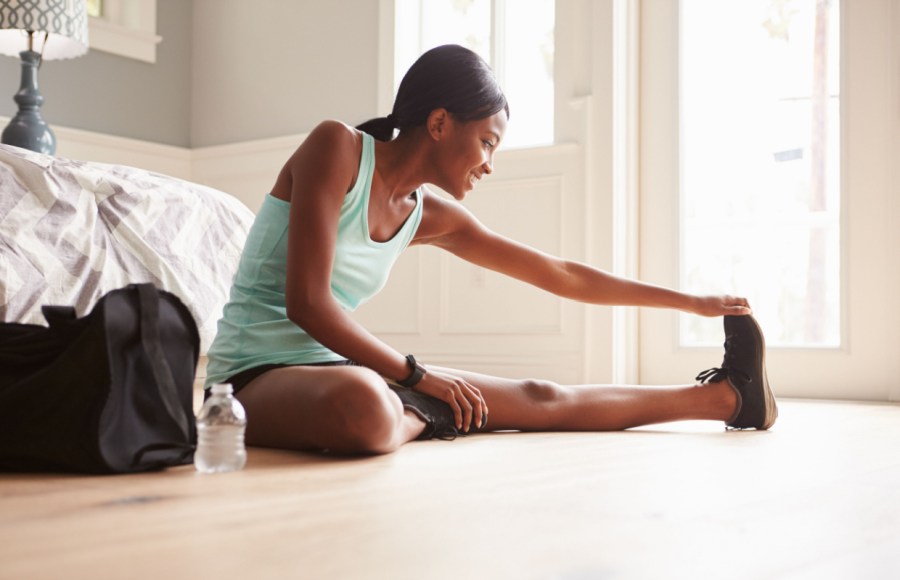Want to get more bang for your workout buck this Christmas? Keeping sessions short and sharp will help to jumpstart results, says the latest science. This 10-minute low-impact home workout is sure to keep you feeling fit during your busy schedule this festive season…
Whilst we usually strive for balance in our diet and exercise routine, December is traditionally the month to let our hair down. And so, carrying on with a sensible eating plan and regular training schedule can sometimes fall to the bottom of our priority list. There are only 24 hours in a day, after all.
So, if your calendar is quickly filling up, and you just don’t have the time or energy to commute to the gym and slog it out in a HIIT class, you’ll be pleased to discover that it’s how often and not the intensity of workouts that will help you to keep fitness levels on track. Yes, really! Scientists have found that moving for a few minutes every day will help to build up strength and keep you healthy, more so than doing lengthy sessions spread across the week.
The ‘move more’ science
To put this idea into practice, scientists from Edith Cowan University (ECU) teamed up with Niigata and Nishi Kyushu Universities in Japan on a four-week training study with three groups of participants. Each group did a biceps curl routine, performed on a machine that measures muscle contraction, over the given period.
Two groups performed 30 reps per week, with one group doing six a day for five days of the week, whilst the other crammed all 30 into a single day. The last group performed six reps, one day a week.
Interestingly, the results showed the group doing 30 contractions in a single day did not experience any increase in muscle strength, although muscle thickness (an indicator of increase in muscle size) increased 5.8 per cent. The group doing six contractions once a week did not show any changes in muscle strength and muscle thickness.
Frequency vs volume of exercise
However, most interestingly, the group that did six contractions a day for five days a week saw significant increases in muscle strength – more than 10 per cent, with an increase in muscle thickness similar to the group that did all 30 reps in one day, once per week. Researchers have concluded that it’s the frequency and not the volume that makes the most difference to health and fitness levels.
‘It really doesn’t matter how long you train for, it is all about effective training. Studies have proven time and time again that you don’t need to exercise for hours on end to get incredible results. If 10 minutes is all you have, then a quick all-body workout will get the muscles working,’ confirms Georgie Spurling, PT, fitness coach and founder of GS Wellness.
Sound good? Try Spurling’s 10-minute low-impact home workout to keep you feeling fit during your busy schedule this festive season.
Your 10-minute home workout
What to expect: Increased mobility, power, strength, speed and fat loss.
Perform each move for one minute with no rest in between each exercise.
- 3/4 squats
- Reverse lunge with overhead hold
- Squat punches
- Thread the needle
- Pike to plank
- Jackknifes
- Bear crawl hold
The reverse lunge, thread the needle and pike to plank must be performed twice (once on each side). If you’re a beginner, do 50-second reps with 10 seconds of rest in between each exercise. Do this workout 4-5 times a week for best results.
Keep reading for full workout instructions.
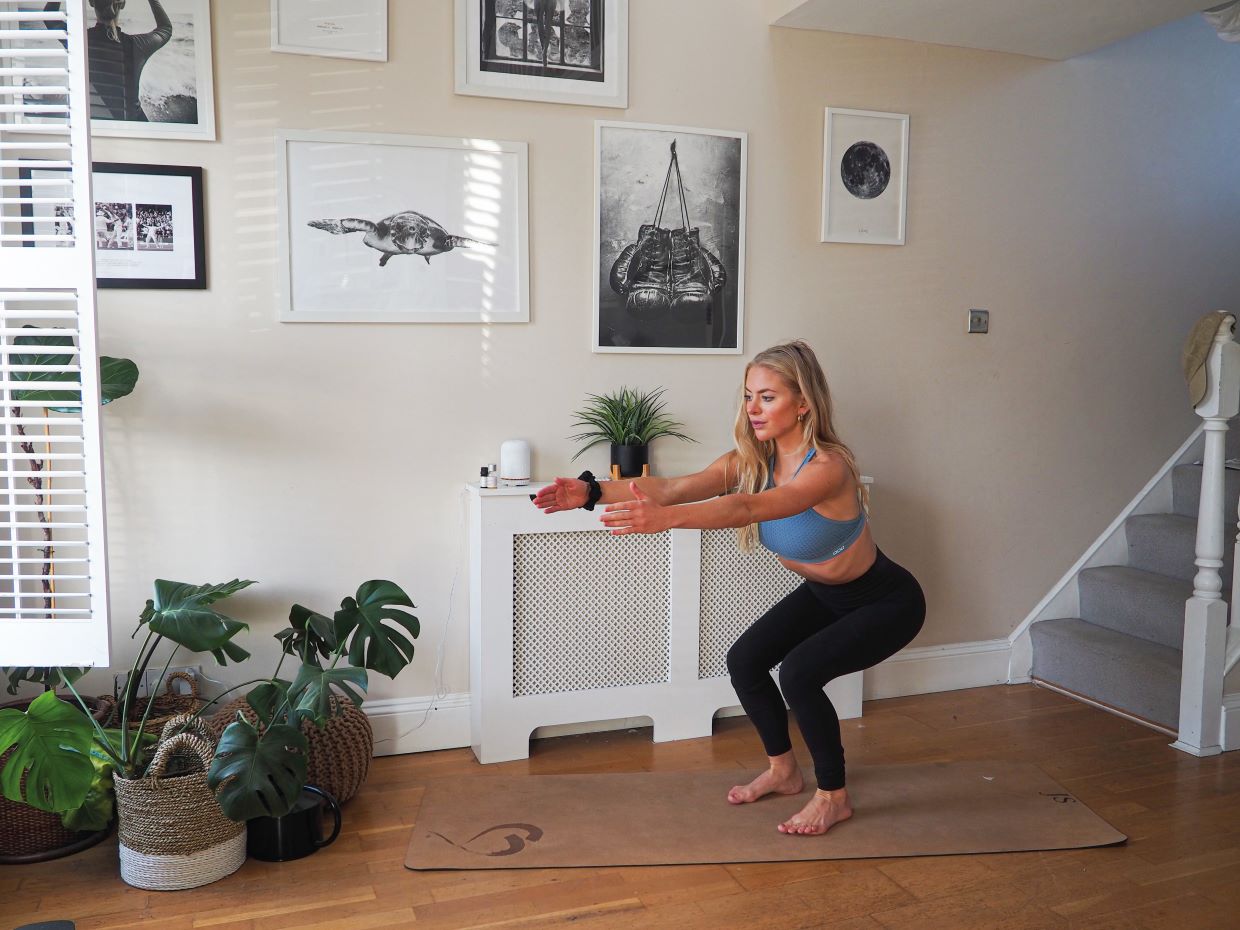
1. 3/4 squats
Areas worked: A regular squat with a twist, this is a super-strengthening move as you are keeping your muscles burning for longer. It also helps to improve posture.
How to do 3/4 squats:
- Sit through your heels as you come into the squat position, arms come in front of you to help get a lower range.
- When you come up, stop a few inches before you get to the top (keep the knees slightly bent).
- This means your muscles stay contracted the entire exercise, rather than resting at the top of the movement.
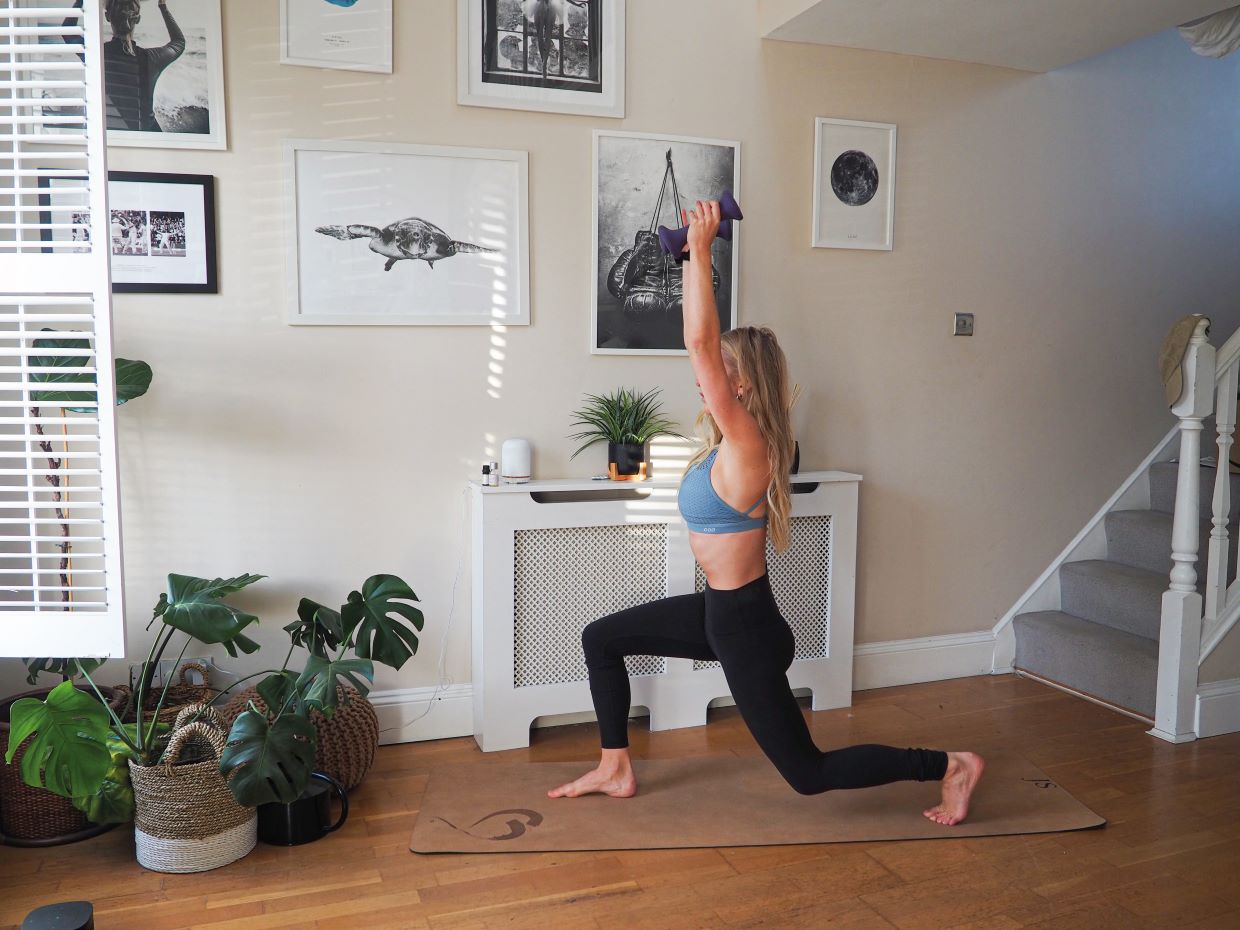
2. Reverse lunge with overhead hold
Areas worked: Balance and coordination. This exercise is a dynamic move, whilst still being low-impact.
How to do reverse lunges with overhead hold:
- Start standing with feet hip-distance apart, and take a large step back with the left leg into a reverse lunge. Keep both knees parallel.
- As you do this, sweep or press two dumbbells or other weights above your head – if you don’t have dumbbells, use water bottles or do it without – this makes the move one that raises your heart rate!
- Once you have done one minute, switch to the other side.
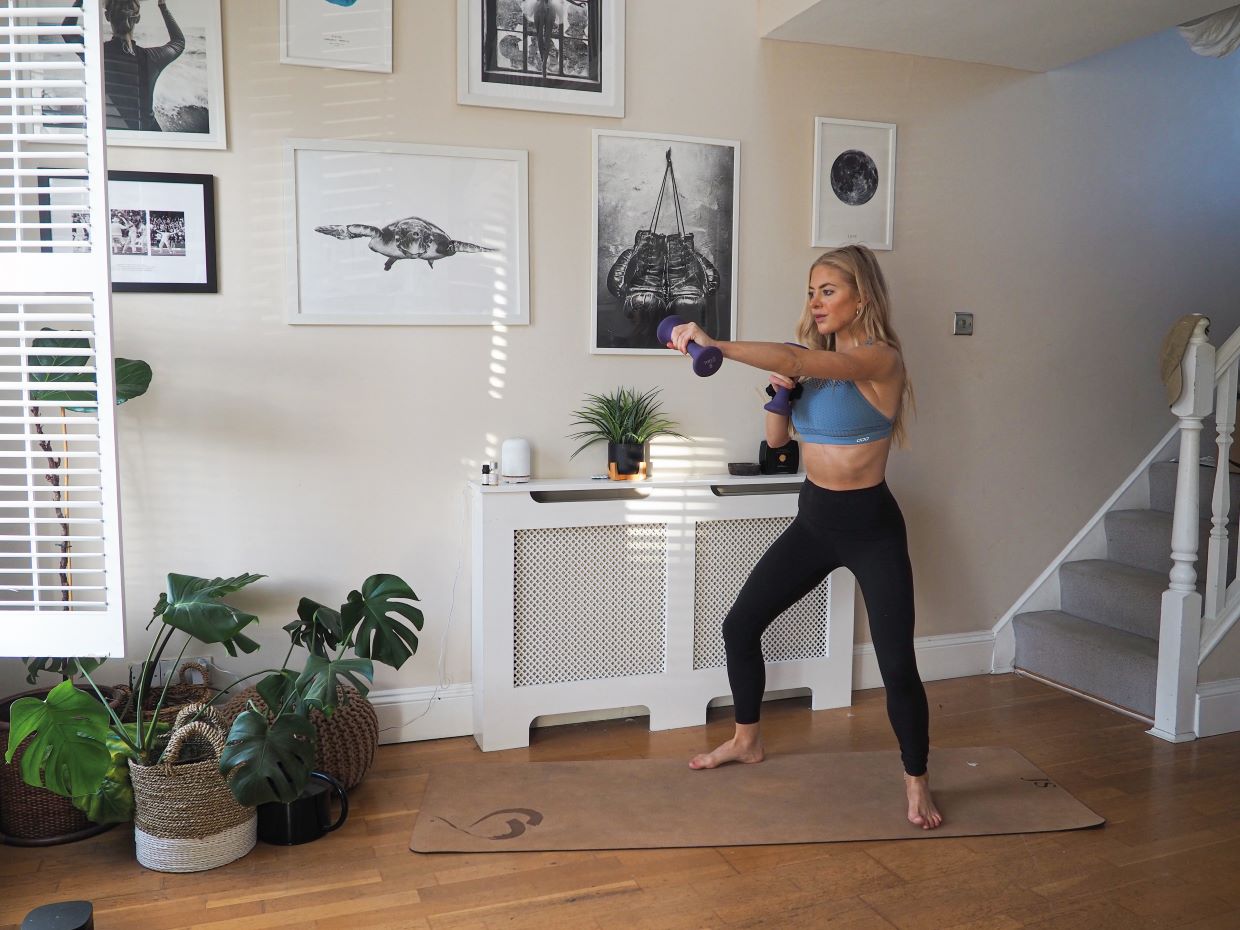
3. Squat punches
Areas worked: Staying in a squat makes this a full-body exercise.
How to do squat punches:
- Isometrically hold a squat.
- Punch with dumbbells side to side (if you don’t have a pair of dumbbells use water bottles instead).
- Make sure to fully extend the arms and keep them at shoulder height.
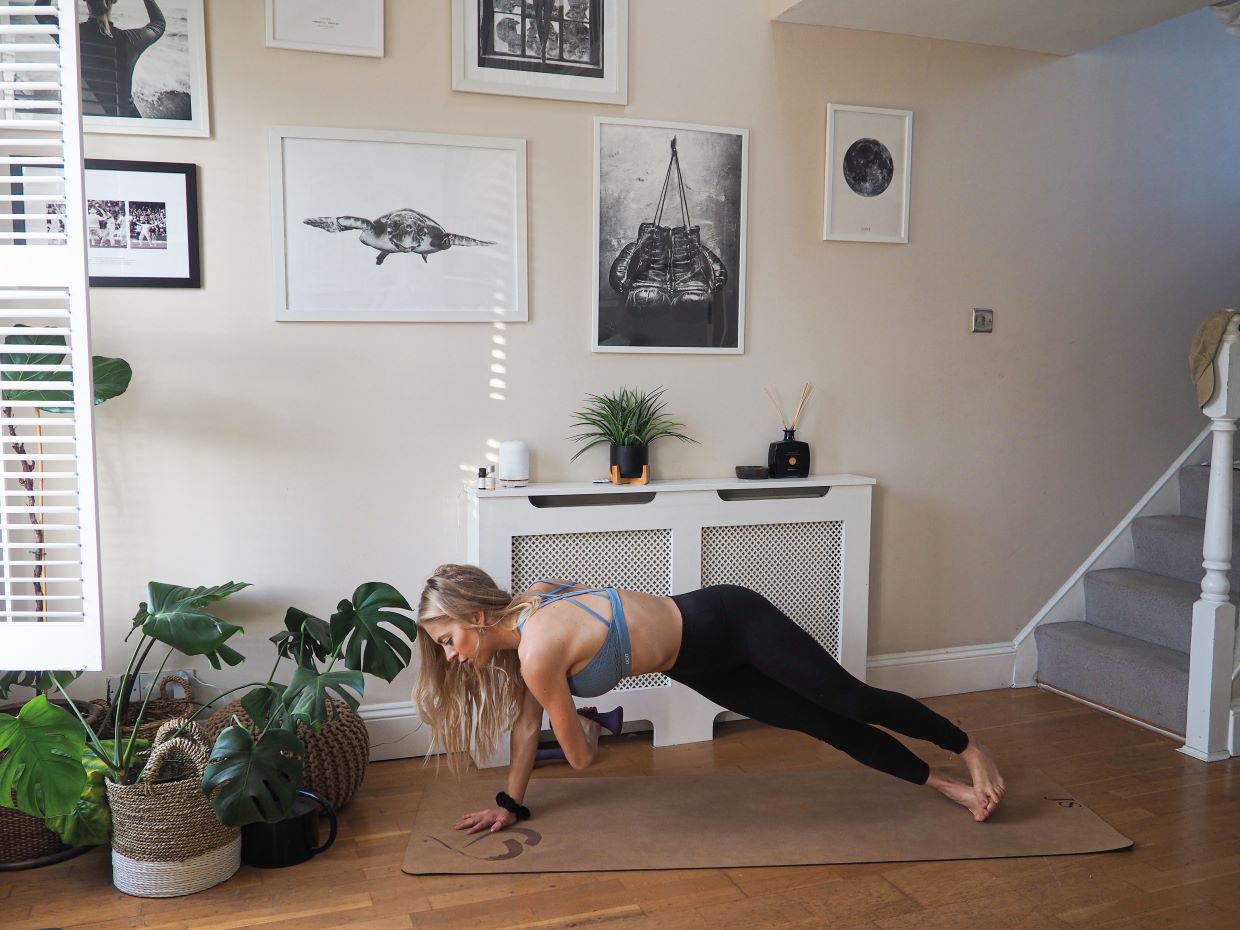
4. Thread the needle
Areas worked: This move creates stability in the obliques and shoulders.
How to do ‘thread the needle’:
- Come into a side plank position, balancing on your lower forearm, top arm extending to the ceiling.
- Thread your raised arm underneath your waist and rotate it back up again. If you struggle with side planks you can drop your hip and knees to the floor.
- Once you have done one minute, switch to the other side.
Top tip: This is one of Spurling’s favourite exercises ever! You can make it harder by holding a dumbbell in your top hand.
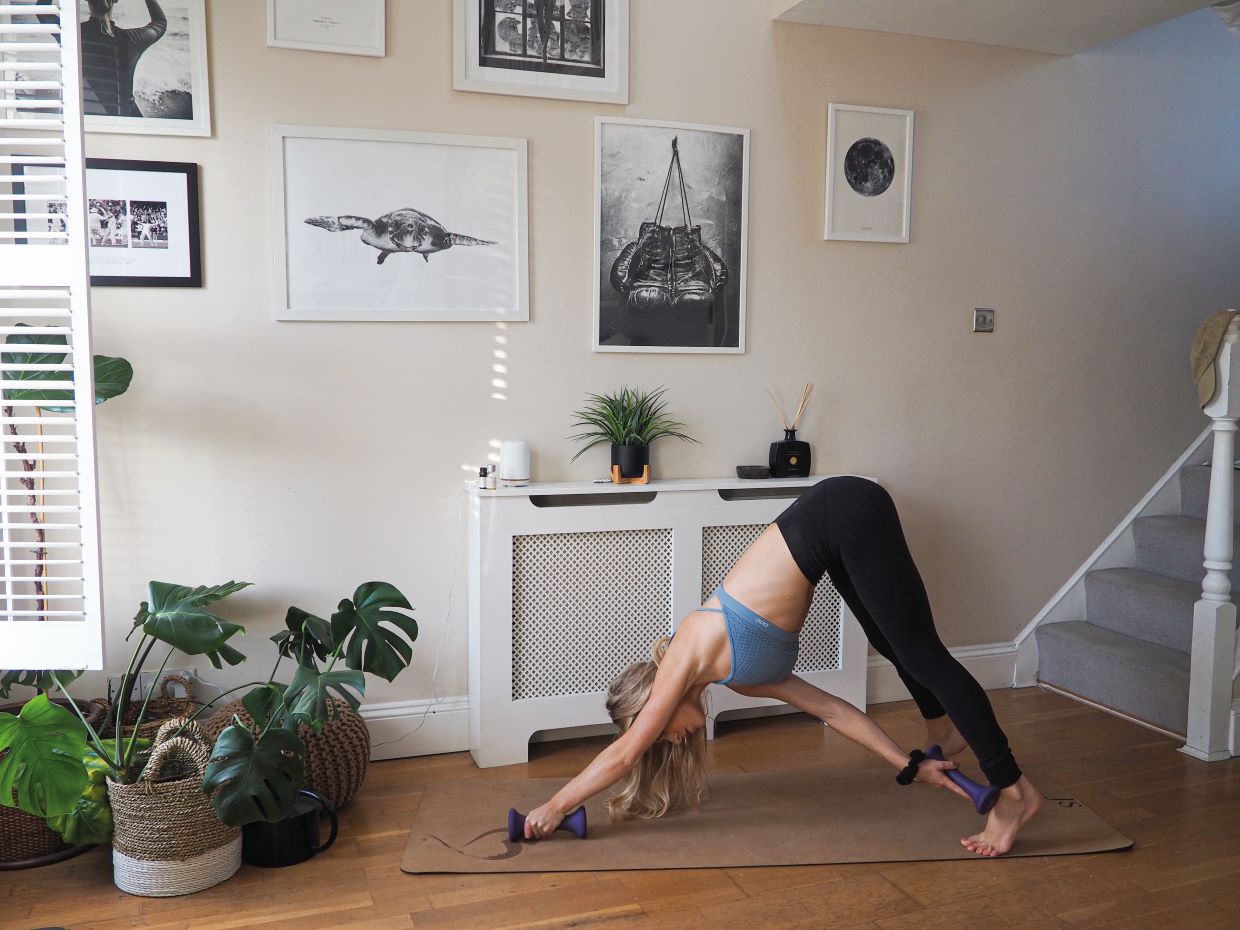
5. Pike to plank
Areas worked: This move helps to increase mobility.
How to do pike to plank:
- Start in a full plank position, then lift your hips up to the sky, whilst drawing your belly button in.
- Whilst doing this, you can take one hand (with or without a dumbbell in it) to the opposite ankle to create a twist.
- Come back into plank then up to pike again, reaching towards the same ankle. This causes instability and creates strength in the front of the core as well as the side.
- Once you have done one minute, switch to the other side.
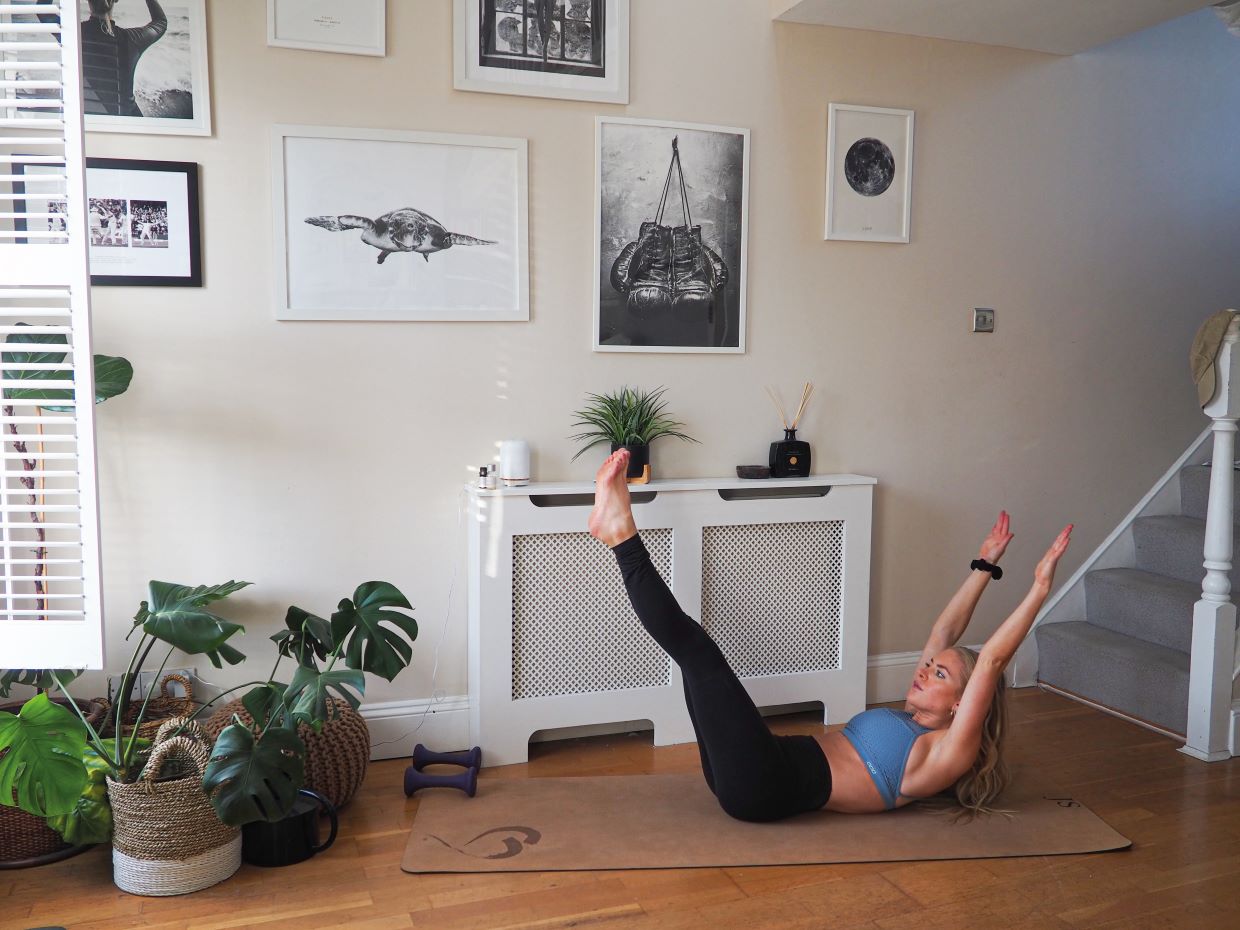
6. Jackknifes
Areas worked: A fantastic move for core control and deep strength.
How to do jackknifes:
- Start by lying on the floor with your arms above your head.
- Lift your legs and arms up to meet each other (almost like you’re folding in half).
- Try lifting your shoulders off the floor to get more range. Then slowly, with control, lower back down.
- If you need to modify, bend your knees.
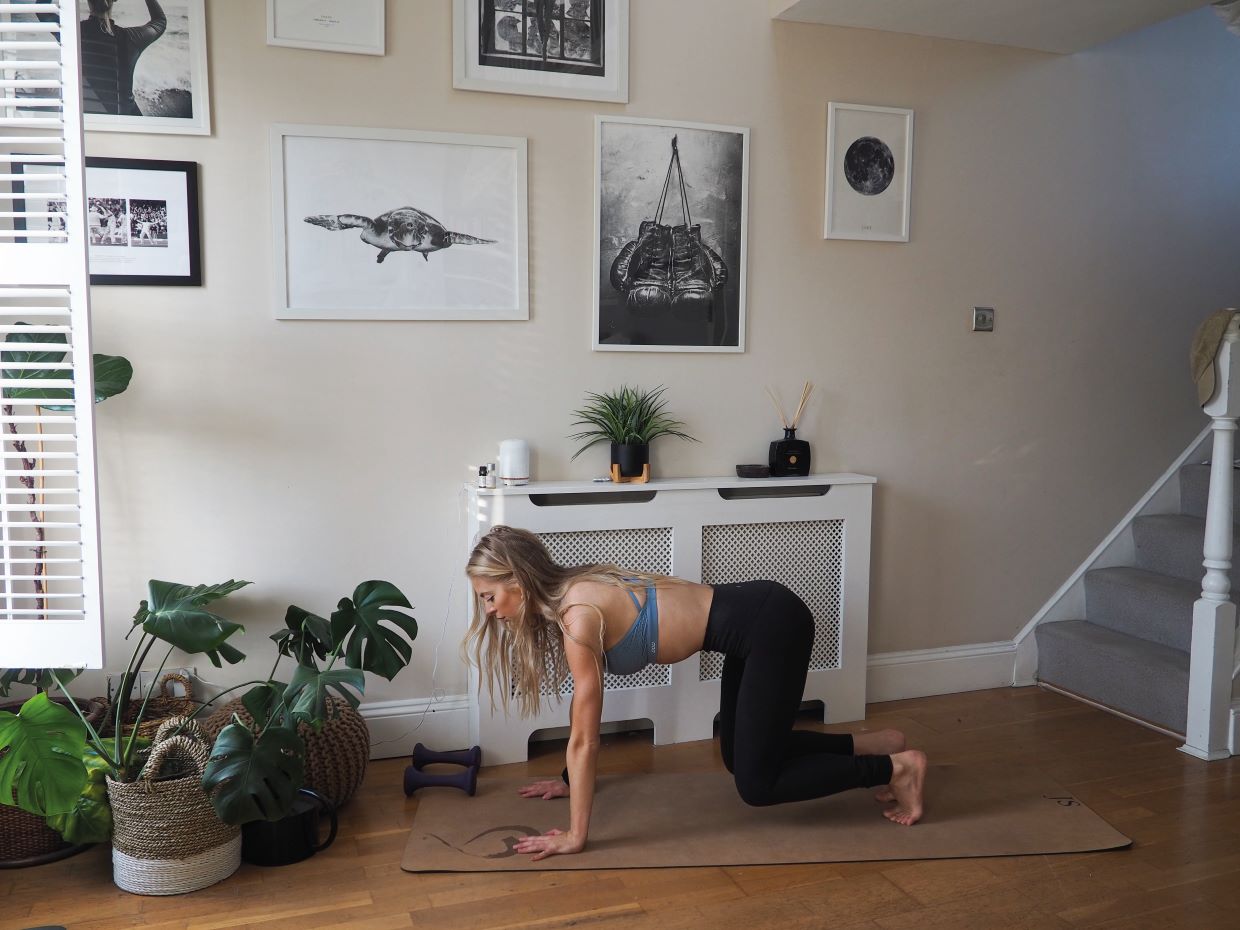
7. Bear crawl hold
Areas worked: Isometric holds are incredible for stability muscles and overall stamina.
How to do a bear crawl hold:
- Come into a full plank then walk your feet in until your knees are under your hips.
- Keep the weight going forward over the wrists and hold this position for up to one minute.
- Make sure your back stays nice and flat like you could balance a glass of water on it.
Words: Louise Pyne

